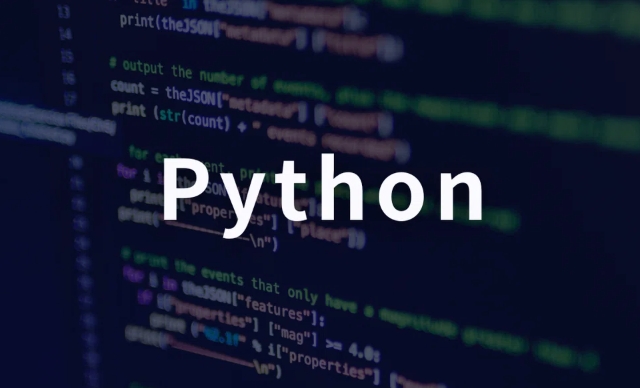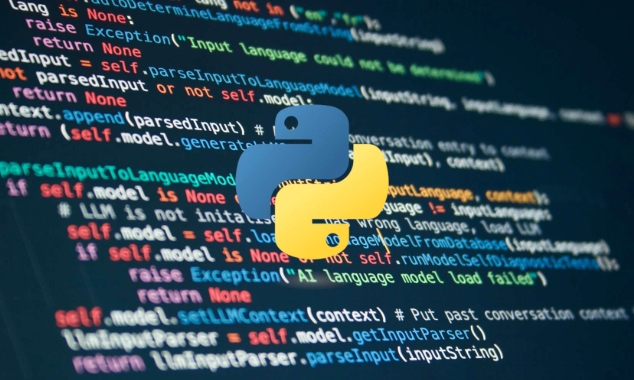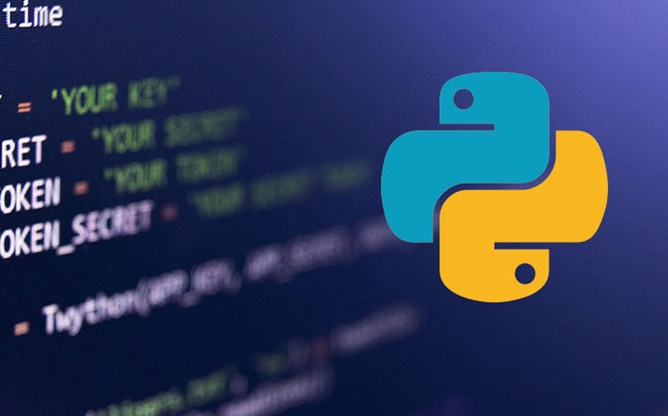super() is used to call the next class in the parent class or MRO. 1. In single inheritance, the parent class constructor is called through super().__init__(name) and retain the parent class behavior; 2. When rewriting the method, use super().speak() to execute the parent class method first and then extend the subclass logic; 3. In multiple inheritance, each parent class method is called according to the MRO order, such as when the E(C, D) instance calls greet() in order; 4. In Python 3, it is recommended to use super() directly without passing parameters to improve code maintainability; correctly understanding the MRO mechanism is the key to mastering the behavior of super() in complex inheritance structures.

super() is a built-in function in Python used to call parent class (or superclass) methods. It is often used in inheritance, especially when rewriting parent class methods, and still want to retain the original functions of the parent class. The following is a clear example to illustrate the usage of super() .

Basic usage: super() in single inheritance
class Animal:
def __init__(self, name):
self.name = name
print(f"Animal created: {self.name}")
def speak(self):
print(f"{self.name} makes a sound")
class Dog(Animal):
def __init__(self, name, breed):
super().__init__(name) # Call __init__ of the parent class
self.breed = breed
print(f"Dog breed: {self.breed}")
def speak(self):
super().speak() # Execute the spoke() of the parent class first
print(f"{self.name} barks") # Add the extension to subclass# Example dog = Dog("Buddy", "Golden Retriever")
dog.speak()Output:
Animal created: Buddha Dog breed: Golden Retriever Buddha makes a sound Buddy barks
?Instructions :

-
super().__init__(name)calls the constructor of the parent classAnimalto avoid repeated writing ofself.name = name. -
super().speak()first executes the behavior of the parent class in the subclass, and then expands the new behavior.
super() in multiple inheritance (MRO mechanism)
Python supports multiple inheritance, super() will automatically decide which parent class method to call according to the method parsing order (MRO) .
class A:
def greet(self):
print("Hello from A")
class B:
def greet(self):
print("Hello from B")
class C(A):
def greet(self):
print("Hello from C")
super().greet()
class D(B):
def greet(self):
print("Hello from D")
super().greet()
class E(C, D):
def greet(self):
print("Hello from E")
super().greet()
# View MRO
print(E.__mro__)
# (<class '__main__.E'>, <class '__main__.C'>, <class '__main__.A'>,
# <class '__main__.D'>, <class '__main__.B'>, <class 'object'>)
e = E()
e.greet()Output:

Hello from E Hello from C Hello from A Hello from D Hello from B
??Note:
- Although
Cinherits fromAandDinherits fromB, the MRO ofE(C, D)is linear. -
super()does not simply call the "parent class", but calls the methods of the next class in MRO order. - Here,
Ccallssuper()andDcallssuper()Aeventually forms aB.
Summary of common usage scenarios
- ? Initialize the parent class in
__init__ - ? Keep parent class logic when rewriting methods
- ? Co-invocation in multiple inheritance (avoid repeated calls)
Tips
-
super()can be written directly in Python 3 without passingsuper(). - If you see
super(ClassName, self).method()in the old code, that is how to write Python 2, and it is recommended to omit parameters now. - Using
super()can make the code more flexible, and renaming the parent class does not affect the subclass.
Basically that's it. super() seems simple, but it is very powerful in multiple inheritance, and understanding MRO is the key.
The above is the detailed content of python super() example. For more information, please follow other related articles on the PHP Chinese website!

Hot AI Tools

Undress AI Tool
Undress images for free

Undresser.AI Undress
AI-powered app for creating realistic nude photos

AI Clothes Remover
Online AI tool for removing clothes from photos.

Clothoff.io
AI clothes remover

Video Face Swap
Swap faces in any video effortlessly with our completely free AI face swap tool!

Hot Article

Hot Tools

Notepad++7.3.1
Easy-to-use and free code editor

SublimeText3 Chinese version
Chinese version, very easy to use

Zend Studio 13.0.1
Powerful PHP integrated development environment

Dreamweaver CS6
Visual web development tools

SublimeText3 Mac version
God-level code editing software (SublimeText3)

Hot Topics
 Polymorphism in python classes
Jul 05, 2025 am 02:58 AM
Polymorphism in python classes
Jul 05, 2025 am 02:58 AM
Polymorphism is a core concept in Python object-oriented programming, referring to "one interface, multiple implementations", allowing for unified processing of different types of objects. 1. Polymorphism is implemented through method rewriting. Subclasses can redefine parent class methods. For example, the spoke() method of Animal class has different implementations in Dog and Cat subclasses. 2. The practical uses of polymorphism include simplifying the code structure and enhancing scalability, such as calling the draw() method uniformly in the graphical drawing program, or handling the common behavior of different characters in game development. 3. Python implementation polymorphism needs to satisfy: the parent class defines a method, and the child class overrides the method, but does not require inheritance of the same parent class. As long as the object implements the same method, this is called the "duck type". 4. Things to note include the maintenance
 Python Function Arguments and Parameters
Jul 04, 2025 am 03:26 AM
Python Function Arguments and Parameters
Jul 04, 2025 am 03:26 AM
Parameters are placeholders when defining a function, while arguments are specific values ??passed in when calling. 1. Position parameters need to be passed in order, and incorrect order will lead to errors in the result; 2. Keyword parameters are specified by parameter names, which can change the order and improve readability; 3. Default parameter values ??are assigned when defined to avoid duplicate code, but variable objects should be avoided as default values; 4. args and *kwargs can handle uncertain number of parameters and are suitable for general interfaces or decorators, but should be used with caution to maintain readability.
 Explain Python generators and iterators.
Jul 05, 2025 am 02:55 AM
Explain Python generators and iterators.
Jul 05, 2025 am 02:55 AM
Iterators are objects that implement __iter__() and __next__() methods. The generator is a simplified version of iterators, which automatically implement these methods through the yield keyword. 1. The iterator returns an element every time he calls next() and throws a StopIteration exception when there are no more elements. 2. The generator uses function definition to generate data on demand, saving memory and supporting infinite sequences. 3. Use iterators when processing existing sets, use a generator when dynamically generating big data or lazy evaluation, such as loading line by line when reading large files. Note: Iterable objects such as lists are not iterators. They need to be recreated after the iterator reaches its end, and the generator can only traverse it once.
 Python `@classmethod` decorator explained
Jul 04, 2025 am 03:26 AM
Python `@classmethod` decorator explained
Jul 04, 2025 am 03:26 AM
A class method is a method defined in Python through the @classmethod decorator. Its first parameter is the class itself (cls), which is used to access or modify the class state. It can be called through a class or instance, which affects the entire class rather than a specific instance; for example, in the Person class, the show_count() method counts the number of objects created; when defining a class method, you need to use the @classmethod decorator and name the first parameter cls, such as the change_var(new_value) method to modify class variables; the class method is different from the instance method (self parameter) and static method (no automatic parameters), and is suitable for factory methods, alternative constructors, and management of class variables. Common uses include:
 How to handle API authentication in Python
Jul 13, 2025 am 02:22 AM
How to handle API authentication in Python
Jul 13, 2025 am 02:22 AM
The key to dealing with API authentication is to understand and use the authentication method correctly. 1. APIKey is the simplest authentication method, usually placed in the request header or URL parameters; 2. BasicAuth uses username and password for Base64 encoding transmission, which is suitable for internal systems; 3. OAuth2 needs to obtain the token first through client_id and client_secret, and then bring the BearerToken in the request header; 4. In order to deal with the token expiration, the token management class can be encapsulated and automatically refreshed the token; in short, selecting the appropriate method according to the document and safely storing the key information is the key.
 What are Python magic methods or dunder methods?
Jul 04, 2025 am 03:20 AM
What are Python magic methods or dunder methods?
Jul 04, 2025 am 03:20 AM
Python's magicmethods (or dunder methods) are special methods used to define the behavior of objects, which start and end with a double underscore. 1. They enable objects to respond to built-in operations, such as addition, comparison, string representation, etc.; 2. Common use cases include object initialization and representation (__init__, __repr__, __str__), arithmetic operations (__add__, __sub__, __mul__) and comparison operations (__eq__, ___lt__); 3. When using it, make sure that their behavior meets expectations. For example, __repr__ should return expressions of refactorable objects, and arithmetic methods should return new instances; 4. Overuse or confusing things should be avoided.
 How does Python memory management work?
Jul 04, 2025 am 03:26 AM
How does Python memory management work?
Jul 04, 2025 am 03:26 AM
Pythonmanagesmemoryautomaticallyusingreferencecountingandagarbagecollector.Referencecountingtrackshowmanyvariablesrefertoanobject,andwhenthecountreacheszero,thememoryisfreed.However,itcannothandlecircularreferences,wheretwoobjectsrefertoeachotherbuta
 Describe Python garbage collection in Python.
Jul 03, 2025 am 02:07 AM
Describe Python garbage collection in Python.
Jul 03, 2025 am 02:07 AM
Python's garbage collection mechanism automatically manages memory through reference counting and periodic garbage collection. Its core method is reference counting, which immediately releases memory when the number of references of an object is zero; but it cannot handle circular references, so a garbage collection module (gc) is introduced to detect and clean the loop. Garbage collection is usually triggered when the reference count decreases during program operation, the allocation and release difference exceeds the threshold, or when gc.collect() is called manually. Users can turn off automatic recycling through gc.disable(), manually execute gc.collect(), and adjust thresholds to achieve control through gc.set_threshold(). Not all objects participate in loop recycling. If objects that do not contain references are processed by reference counting, it is built-in






